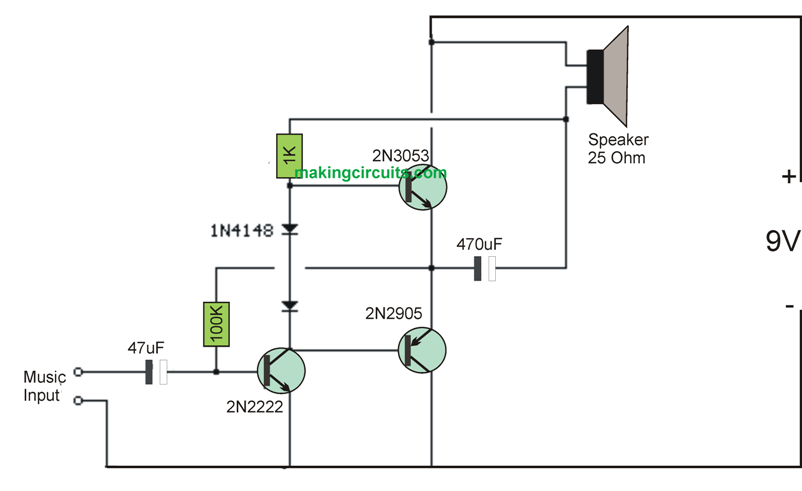The following is a small transistor amplifier circuit much like you will probably find in a compact transistor car radio. The source stage is biased to ensure the source voltage is separated proportionately throughout the a couple of matching output BJTs that happen to be moderately biased in conduction by the diodes between the bases. A 3.3 ohm resistor is employed in sequence with the emitters of the output driver transistors to strengthen the bias current in order that it neglects to variations considerably with heat range or with diverse transistors and diodes. While the bias current raises, the voltage concerning the emitter/base reduces, consequently cutting down the conduction. Input impedance is around 500 ohms and voltage advantage is approximately 5 using an 8 ohm speaker connected. The voltage fluctuation upon the speaker pertains to 2 volts with minimum distortion and power output is within the 50 milliwatt assortment. A greater supply voltage along with the inclusion of heat sinks to the output driver transistors would certainly render an increase in power. The proposed Small Transistor Amplifier Circuit derives approximately 30 milliamps coming from a 9 volt supply.

Hello, i wanna use the circuit as a college project. Is there any calculations or maybe a simulation that could assist me later on in explaining this on my report?